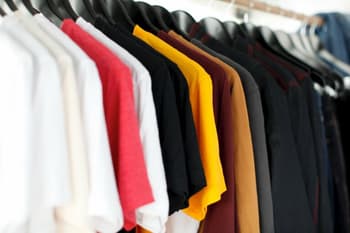Often, you’ll see two products on the shelves at your local supermarket or chemist that look incredibly similar. One brand may have copied the other product’s ‘get-up’. If this is the case, the offending brand would be misleading and deceiving customers under the Australian Consumer Law (ACL). This article will explain what a product’s get up is and what you can do if your business’ products have been copied.
What is a Product’s ‘Get-Up’?
The get-up of a product is the way it appears to the public, including its labelling and packaging. Labelling and packaging include individual elements such as:
- colour;
- graphics;
- design;
- containers; and
- arrangements.
What is Misleading and Deceptive Conduct?
The ACL prohibits businesses from engaging in conduct that is likely to mislead or deceive customers.
Additionally, you cannot make a false representation when selling or marketing goods or services if they have the sponsorship or approval of, or affiliation with, a particular person or party.
The relevant question is: Could a reasonable customer who is familiar with your product’s get-up, purchase a competing product believing that product to be yours? The answer depends on a number of factors.
1. Your Reputation and Product Distribution
Firstly, the reputation and distribution of your products include:
- sales; and
- advertising and promotion of the packaged products.
The court will also look at evidence of competing products with similar features. If there are many products available with similar features, those features may be “commonplace”.
You must prove that your product’s get-up is distinctive. This means that if a customer familiar with your product saw just the packaging, and not your brand name, they’d still recognise it as your product.
2. Your Competitor’s Reputation and Advertising
Secondly, if your competitor has already built up their own strong reputation, customers may not experience confusion. This is because they could recognise the other brand’s product as belonging to them.
This will depend on how much your competitor has advertised and marketed their products and whether, as a result of that, customers would recognise their products and packaging.
3. The Differences Between the Products
When assessing whether the get-up of the other product is deceptively similar to yours, the overall impression the product leaves on a customer is what matters, rather than individual product features.
The court, however, will still examine the individual similarities and differences, since these lead to an overall impression. So the court may, for example, look at whether the:
- labels or packaging are the same colour;
- font is the same;
- composition is the same; or
- names sound or look similar.
Again, these features have to be unique and distinctive.
Reputation in the get-up is in the context of your industry and market, not the Australian community at large.
4. The Circumstances in Which the Products Are Offered to the Public
The circumstances in which the products are offered to the public include:
- how the goods are sold, including who the target customer is;
- where the products are sold; and
- how they are displayed in a store. This includes if the products are grouped by product or brand and if the branding is clearly displayed and visible to customers. For example, if you are both selling a protein powder, it is likely that you will sell your products in similar outlets, such as gyms and health food stores.
The prices of products often prevent confusion.
The price of the product can also indicate how much care a reasonable customer would take in reading the label properly before committing to buy it.
However, even if a product is expensive, once a customer becomes well acquainted with it, they might not look at the label with as much care. Therefore, if your competitor’s get-up is deceptively similar, the customer could still be confused.
5. Your Competitor’s Intention
Finally, your competitor’s intention is relevant. If they meant to copy your product, that might mean they were aiming to mislead and deceive customers.
If you satisfy these five relevant considerations, a court may decide that your competitor misled customers.
Continue reading this article below the formKey Takeaways
The court takes a complex approach to deciding whether the get-up of two products is so deceptively similar that it is likely to mislead or deceive customers. A lot of money, time and effort go into building a brand and, unfortunately, there may be competitors in the industry that choose to exploit your efforts. Five considerations can help to give you a sense of whether your competitor’s conduct is misleading and deceiving:
- your reputation and product distribution;
- your competitor’s reputation and advertising;
- the differences between the products;
- the circumstances in which the products are offered to the public; and
- your competitor’s intention.
If you need help deciding whether a competitor has copied your product’s get-up, contact LegalVision’s competition lawyers on 1300 544 755 or fill out the form on this page.
We appreciate your feedback – your submission has been successfully received.











